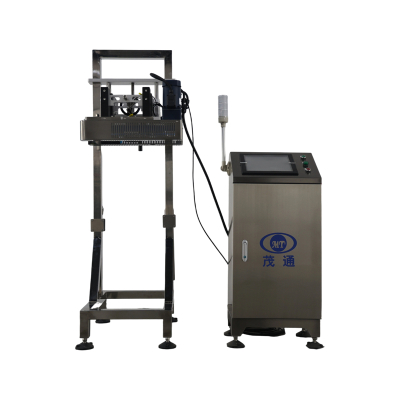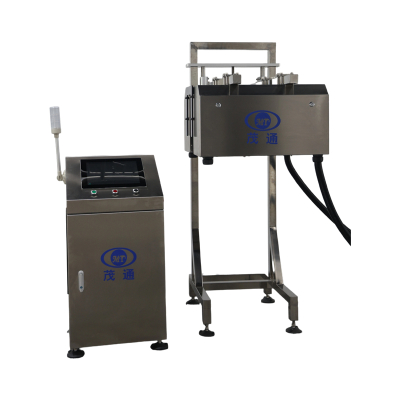2025: A New Era for Smart Manufacturing – The Path to Intelligent Upgrading of Appearance Visual Inspection Equipment
#appearance visual inspection
In the grand landscape of smart manufacturing, appearance visual inspection equipment is undergoing a profound intelligent transformation. Entering 2025, with increasingly stringent quality control across industries and the continued advancement of Industry 4.0 and smart manufacturing strategies, the intelligent upgrading of appearance visual inspection equipment has become a key driver of manufacturing development.
Why is appearance visual inspection equipment so crucial in the wave of smart manufacturing?
The core of smart manufacturing is to achieve high efficiency, precision, and flexibility in the production process through digital and intelligent technologies. Appearance visual inspection equipment acts as the "eagle eye" of smart manufacturing, bearing the heavy responsibility of being the first line of defense for product quality. From consumer electronics to automobile manufacturing, from food packaging to pharmaceutical production, no industry can ignore the quality of product appearance. Minor scratches, dimensional deviations, and color inconsistencies can all affect product performance, user experience, and even safety. Traditional manual inspection methods are not only inefficient and susceptible to subjective interference, but also suffer from soaring error rates under high workloads, making them unsuitable for the large-scale, high-precision production demands of the smart manufacturing era. Visual inspection equipment, with its fast, accurate, and stable characteristics, can monitor product appearance in real time on the production line, promptly identify and remove defective products, providing a solid guarantee for product quality and helping enterprises improve production efficiency, reduce costs, and enhance market competitiveness.
Intelligent Upgrade: A Key Path to Breaking Traditional Constraints
Technological Integration: The Powerful Synergy of AI + Machine Vision
Traditional visual inspection algorithms are mostly based on simple features such as brightness and color differences for defect judgment, proving inadequate when faced with complex processes and novel defects. Today, the deep integration of AI technology and machine vision has brought a qualitative leap to visual inspection. Take the industry challenge of inspecting the appearance of the blue film on battery packs in the lithium battery industry as an example. The blue film is thin, reflective, and prone to various defects such as scratches, breaks, and wrinkles during production, with random defect locations, highlighting the shortcomings of traditional algorithms. However, by deeply integrating 2D/3D/2.5D detection algorithms with AI deep learning algorithms to form know-how, and combining this with project implementation experience to form industry know-how, a significant improvement in inspection results is ultimately achieved. In practical applications, such as using 2.5D imaging technology, multiple images with different orientations and color combinations can be obtained in a single shot. This not only speeds up the detection process but also saves equipment and space, reducing equipment costs by up to 75%. The self-developed image fusion algorithm can generate textured images with near-3D effects from multiple images, effectively eliminating the influence of reflections, shadows, and ambient light, solving many problems associated with 2D imaging. AI detection technology equipped with deep learning algorithms further enhances the performance of the defect detection system, supporting small-sample learning and data analysis, making defect classification more accurate and refined.
3D Technology Enables: Achieving Micrometer-Level Precision Detection
In traditional visual inspection, 2D imaging technology is limited by a planar perspective, resulting in poor performance for complex curved surfaces, reflective materials, or tiny 3D defects. However, by 2025, the application of 3D technology in appearance visual inspection equipment will become increasingly widespread and in-depth. For example, Lead Intelligent Equipment has created its self-developed HySmart algorithm platform by deeply integrating 3D technology with AI algorithms. The platform's full-space 3D vision algorithm boasts high-precision multi-manipulator collaborative calibration technology and multi-source sensor intelligent fusion algorithms, enabling the construction of a full-stack vision technology solution for precise operations and providing strong support for accurate inspection in complex production environments. Its high-detection AI vision algorithm, equipped with a highly optimized next-generation deep learning model library, achieves micron-level defect detection accuracy, accurately capturing minute flaws that are difficult to detect with the naked eye with a detection rate exceeding 99.9%. Neural networks based on point cloud data can accurately analyze the three-dimensional morphology of complex workpieces, achieving stable detection of reflective, low-contrast, or transparent materials through multi-modal data fusion, breaking through the limitations of traditional inspection methods and driving the intelligent transformation of quality control systems in multiple fields such as automotive manufacturing and consumer electronics.
Intelligent Architecture: From Single Device to Integrated System
Appearance visual inspection equipment is no longer merely an independent entity, but is developing towards integration and systematization, becoming part of the entire intelligent manufacturing ecosystem. In this process, the Internet of Things (IoT) and edge computing play a crucial role. IoT devices, such as intelligent sensor arrays, collect appearance information from the production line in real time and efficiently transmit it to edge computing nodes. Edge computing enables rapid data processing near the data source, providing instant feedback on inspection results, reducing latency and alleviating cloud pressure. Through the synergy of IoT and edge computing, optimized appearance inspection algorithms can be deployed in different geographical locations, improving overall system performance. Simultaneously, big data analytics is deeply embedded. It can process and mine historical appearance inspection data, discover potential quality patterns and abnormal behavior patterns, enabling predictive maintenance and optimization. Based on data predictions of potential defect types and frequencies, preventative measures and process improvement plans can be developed in advance. Furthermore, big data enables quality traceability and supply chain management throughout the product lifecycle, optimizing supplier evaluation and supply chain collaboration.
Industry Transformation and Achievements Brought by Intelligent Upgrades
Jinan Maotong's series of AOI industrial appearance visual inspection equipment utilizes a fusion technology of humanoid optical imaging and AI algorithms to accurately "capture" micron-level defects. Taking mobile phone glass cover inspection as an example, manual inspection in the past was not only time-consuming and labor-intensive, but also difficult to guarantee efficiency and quality due to the wide variety of defects and the eye-damaging inspection environment. Current AOI (Automated Optical Inspection) equipment utilizes a light-dark field fusion lighting method, combined with a self-developed controller to control the light source flicker, comprehensively revealing defects. AI algorithms then automatically analyze the images, completing the detection of nearly a hundred defect indicators. Its inspection speed can reach 1.5 seconds per piece, with inspection accuracy down to the micrometer level. Compared to the efficiency of traditional manual quality inspection (3 to 5 pieces per minute), it not only increases the defect detection rate to over 90% but also achieves a standardized inspection rate of 40 pieces per minute, resulting in a comprehensive quality and efficiency improvement of over 20 times. This makes the "zero-defect" goal possible in high-end manufacturing fields such as glass covers and display panels. Quectel Wireless Solutions' self-developed AI vision inspection system has also achieved remarkable results. Based on pre-entered quality inspection standards, this system can operate 24/7 without interruption. Compared to traditional manual inspection, its inspection efficiency is increased by 8 times, and it can also record inspection data in real time, enabling data-driven traceability of product quality. With continuous learning and training, the accuracy of AI equipment has been steadily improving, achieving a 99% accuracy rate in 2000 samples, exceeding the industry average of 95%. In actual production, after the module enters the vision inspection system, the equipment automatically completes coordinate and information recognition, surface and flatness inspection. Qualified products proceed to the next process, while defective products are picked up and sent to the defective product line. The entire process requires no manual intervention, greatly improving production efficiency and product quality.
Looking to the Future: Continuous Innovation, Leading to New Heights in Intelligent Manufacturing
Looking to the future, the intelligent upgrading of appearance vision inspection equipment will continue to deepen. AI technologies, represented by large-scale models, will be more widely applied, further improving inspection accuracy and efficiency, enhancing the ability to inspect complex scenes and irregularly shaped products, as well as small batches of multi-model products, while reducing development costs and automation complexity. The development of multimodal fusion technology will enable appearance vision inspection equipment to integrate data from other sensors such as sound, temperature, and pressure, providing more comprehensive information and achieving more accurate inspection. Simultaneously, the equipment will evolve towards greater intelligence, flexibility, and ease of use, building a knowledge-enhanced decision-making system to achieve functions such as automatic standard retrieval, conformity assessment, and automatic generation and delivery of adjustment suggestions, comprehensively upgrading the decision-making wisdom of intelligent inspection. In 2025 and beyond, the intelligent upgrade of appearance visual inspection equipment will undoubtedly become a key force driving the development of intelligent manufacturing, helping various industries stand out in fierce market competition and achieve high-quality, sustainable development.




